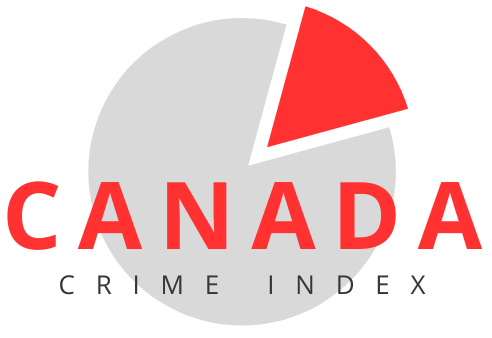Understanding the dynamics of minimum wage rates is crucial for both employees and employers.
Canadian provinces, like Newfoundland and Labrador, where we recently witnessed minimum wage rate increases are about to adapt to the current conditions.
As one of the Canadian Atlantic provinces, Newfoundland and Labrador have a special place in the economy.
Let us talk about it in greater detail.
Recent Developments in Minimum Wage NL
The minimum wage in Newfoundland and Labrador has seen significant developments, particularly with the April 2024 decision to increase it to $15.60 per hour.
- April 1, 2021 – $12.50
- October 1, 2021 – $12.75
- April 1, 2022 – $13.20
- October 1, 2022 – $13.70
- April 1, 2023 – $14.50
- October 1, 2023 – $15.00
Comparing Newfoundland and Labrador to other Atlantic provinces of Canada, it is clear that the region’s minimum wage is relatively competitive.
While some provinces, like Prince Edward Island, have closely followed similar wage increases, others have lagged slightly behind.
PEI’s minimum wage increase:
+ 80 cents on January 1, 2023 to $14.50 per hour.
+ 50 cents on October 1, 2023 to $15.00 per hour.
Read the board’s report: https://t.co/CfdSh8iMUg
Today’s press release: https://t.co/Ka6ExSReaC— Government of PEI (@InfoPEI) September 20, 2022
- New Brunswick – $15.30
- Nova Scotia – $15.20
- Prince Edward Island – $15.00, increasing to $16.00
The increase positions Newfoundland and Labrador among the higher minimum wages in Atlantic Canada.
It reflects the province’s commitment to improving the economic welfare of its residents, which is among the prime benefits according to a report compiled by the Bank of Canada.
The implications of these changes must be analyzed to fully understand their impact on the regional economy and the various demographic groups within the province.
- Alberta – $15.00
- British Columbia – $17.40
- Manitoba – $15.30
- Northwestern Territories – $16.05
- Nunavut – $19.00
- Ontario – $16.55; min wage increase to $17.20
- Quebec – $15.75
- Saskatchewan – $14.00; min wage increase to $15.00
- Yukon – $17.59
Economic Impact of Minimum Wage NL Changes
For low-income workers, particularly those in vulnerable demographic groups, a minimum wage NL rate increase of $15.60 provides a boost to their earnings.
- Hotel clerk: $16 per hour
- Food and beverage server: $15 per hour
- Dishwasher: $14 per hour
- Service station attendant: $14 per hour
- Cashier: $14 per hour
Increasing the minimum wage newfoundland and labrador rates helps bridge the gap between their income and the cost of living, allowing for a better standard of living and potentially reducing poverty rates in the province.
The impact is not uniform across all groups. Women, who often occupy lower-paying jobs, may see a more significant benefit from the wage increase.
Racialized communities, who are disproportionately represented in low-wage occupations, stand to gain from this policy change, promoting greater economic equity.
From the perspective of businesses, the wage increase presents both challenges and opportunities.
One of the major issues businesses have in Newfoundland and Labrador is labor shortage.
Here are the most in-demand jobs in the province:
| Occupation | Job Description | Median Annual Wage/Salary |
|---|---|---|
| Accountants | Manage and organize accounting systems for businesses and individuals. | $70,867 |
| Construction Trades Helpers | Assist in construction sites, quarries, and surface mines. | $39,000 |
| Cooks and Food and Beverage Servers | Work in the hospitality sector preparing food and serving customers. | $30,420 (excluding tips) |
| Equipment Mechanics | Repair and maintain heavy-duty mobile equipment. | $68,445 |
| Heavy Equipment Operators | Operate heavy equipment for construction and other industrial activities. | $49,530 |
| Physicians – Family and Specialists | Diagnose and treat diseases and disorders. | $202,089 (Family), $245,344 (Specialists) |
| Registered Nurses | Provide direct nursing care, health education, and consultative services. | $80,418 |
| Retail Sales Managers | Oversee retail and wholesale trade operations. | $49,686 |
| Software Developers | Write, modify, and test computer code for various software applications. | $74,100 |
| Transport Truck Drivers | Drive trucks for transporting freight across various routes. | $46,800 |
While some employers may struggle with the higher wage bill, others may find that the increased purchasing power of workers translates into higher consumer spending, potentially boosting the local economy.
Smaller businessess particularly those operating on thin margins, might face more significant difficulties in adjusting to the new wage rate.
The balance between maintaining profitability and providing fair wages remains delicate, requiring careful consideration of the diverse impacts on the business community.
One of the arguments against this approach is the backlash it can have on the high-skill workers.
Living Wage vs. Minimum Wage Newfoundland and Labrador
- Food
- Housing
- Transportation
- Clothes
A living wage is crucial for ensuring that all workers can afford a decent standard of living.
In Newfoundland and Labrador, the living wage is calculated to be higher than the current minimum wage of $15.60 per hour.
For this province, living wages are calculated per region.
- $23.95 for Central
- $24.20 for Eastern
- $23.80 for Western
- $26.80 for Labrador-Northern Peninsula
As we can see, they are significantly above minimum wage.
Unlike the minimum wage, which is often set based on economic and political factors, the living wage is calculated based on the actual cost of living in a particular region.
In Newfoundland and Labrador, the living wage would need to be significantly higher than the current minimum wage to ensure that workers can meet their basic needs without financial strain.
To bridge the gap between the living wage and the minimum wage, several policy recommendations could be considered.
These might include:
-
- Incremental wage increases aligned with inflation
- Targeted support for low-income workers
- Initiatives aimed at reducing the cost of living, such as affordable housing programs
Implementing these changes would require a concerted effort from both the government and the private sector, with a focus on creating a more equitable and sustainable economic environment for all workers in the province.
Future Outlook and Policy Considerations
Looking ahead, there are discussions about further increases Newfoundland minimum wage, with the Canadian Centre for Policy Alternatives suggesting a gradual rise to $20 per hour by 2027.
Such an increase would have significant implications for workers in Newfoundland and Labrador.
The impact on businesses could be more complex.
While higher wages could lead to increased consumer spending, they might also result in higher operating costs for businesses, particularly those in labor-intensive industries.
One of the issues that has recently occurred in the province, is the problem with the costly process of shutting down the oil projects.
Small businesses, in particular, may face challenges in adapting to these changes without consequences like:
- Passing on costs to consumers
- Reducing their workforce
Any needs of workers with the economic realities faced by businesses.
The long-term economic and social implications of these changes are significant. Higher minimum wage NL could lead to reduced poverty rates and greater economic stability for many workers.
However, we have conflicting reports on this. For instance, the Fraser Institute points out that higher wages have no real benefits in reducing poverty rates.
While we are on that, the poverty rate in Newfoundland and Labrador was 14.3% in 2021 according to Statista.
Without corresponding increases in productivity and economic growth, there is a risk of inflationary pressures and potential job losses.
In March, the Bank of Canada sounded the alarm for low productivity within the country. The risk of inflation is one of the consequences pointed out.
In Conclusion
The ongoing evaluation of minimum wage policies in Newfoundland and Labrador underscores the importance of balancing economic growth with worker welfare.
In the future, it will be crucial to ensure that these changes sustainably support both workers and businesses.















